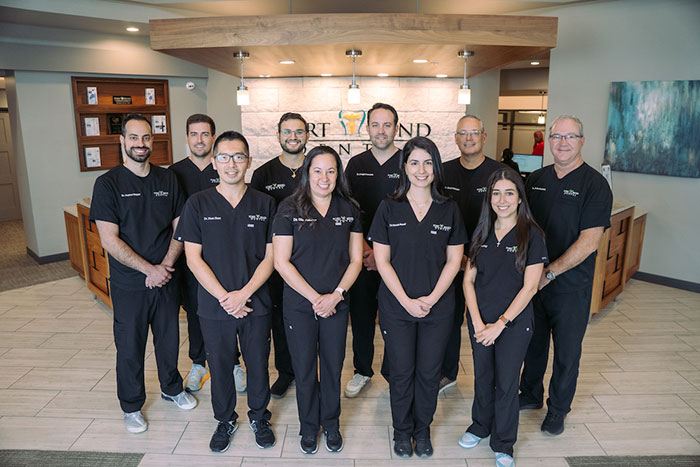
When patients attend dental appointments, they hope to hear that they don’t have any cavities so they can avoid an additional dental appointment. However, cavities are common, and when these areas of tooth decay develop, we want to treat them quickly and conservatively to help our patients preserve and maintain their oral health. At Fort Bend Dental, we offer various restorative dentistry treatments to rebuild tooth structure that has been lost to decay. While these treatments do require care beyond that of a standard exam, we will make every effort to keep you comfortable when you undergo treatment. To find out which treatment for cavities is most appropriate in your case, contact our Richmond, TX and Missouri City, TX practice today.
Dental Fillings
As with all treatments for tooth decay, the dental filling process begins with the use of local anesthesia to numb the treatment area, followed by a thorough cleaning to remove all signs of infected tooth material. When only healthy portions of the tooth are left, we will fill in the cavity with a tooth-colored composite resin material. This soft, resin material can replace the lost tooth structure. Once the composite material is in place, it is hardened with a special light. The surface of the tooth can then be refined to maintain a comfortable bite.
Inlays
An inlay is a custom-made porcelain restoration that replaces lost tooth structure within the indented biting surface of the molars and pre-molars. After we have administered anesthesia and cleaned the tooth, we will take digital impressions, which will be used to fabricate a well-fitting restoration. Our in-office CEREC® milling system can then fabricate the inlay, so we can cement it in place that same day. The inlay will fit within the indented surface of the tooth, replacing lost tooth structure and restoring your bite.
Onlays
Onlays are similar to inlays. The custom-made porcelain restorations fit on the biting surface of the posterior teeth. Onlays cover more of the surface of the teeth, restoring the indented area and the cusps. The treatment process for inlays and onlays is the same. We will administer local anesthesia, remove any diseased tooth structure, and take impressions of the tooth. Then, the CEREC® machine will fabricate the custom onlay, which can be cemented into place.
Crowns
Dental crowns are appropriate when patients have large cavities that have seriously compromised the strength of the tooth. These restorations completely encase the visible portion of the tooth, providing the strength and support it needs to withstand the stress of normal, daily dental functions.
The treatment process involves the use of a local anesthetic, and the cleaning of the tooth. In addition to removing any infected tooth structure, we will need to remove some healthy tooth structure along the perimeter of the tooth. This will provide the space needed so the crown can fit over the tooth. Once the tooth has been prepared, we will take digital impressions, and then the CEREC® machine will mill a custom-fit porcelain crown. Next, we will cement the crown in place and refine your bite to finish the dental crown treatment process.
To find out which treatment for cavities is right for you, contact Fort Bend Dental today.
Posted on behalf of

